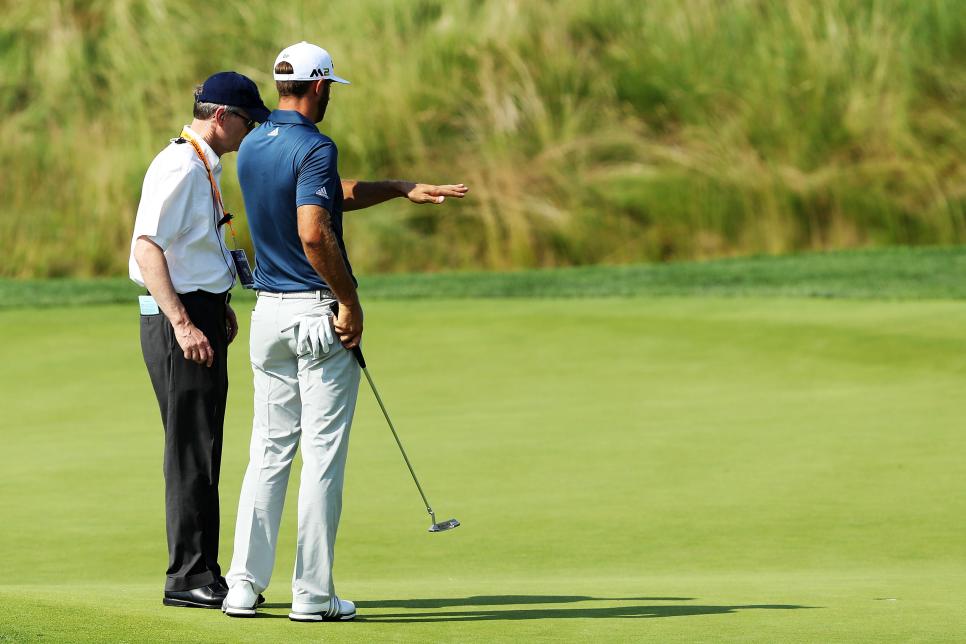OAKMONT, Pa.—Check your emotions at the door. Set aside what you saw. Ignore the tweets. Let’s just consider whether the USGA followed the letter of its own laws in penalizing U.S. Open champion Dustin Johnson.
Deep breaths everyone, deep breaths.
Okay, here goes:
18-2. By Player, Partner, Caddie or Equipment
Except as permitted by the Rules, when a player's ball is in play, if
(i) the player, his partner or either of their caddies:
•lifts or moves the ball,
•touches it purposely (except with a club in the act of addressing the ball), or
•causes the ball to move, or (ii)the equipment of the player or his partner causes the ball to move, the player incurs a penalty of one stroke.
From the time the USGA “committee” looked at the replay and informed Johnson they wanted a post-round review, and then revealed on the Fox broadcast that they had questions for Johnson, it was though they had already made up their mind: evidence suggested Johnson caused the ball to move.
What did they base their opinion on?
The Decisions of Golf, a more detailed explanation of various rules, say that in situations where there are questions as to why a ball moved, the committee has to consider the “weight of the evidence.”
From Rule 18-2/0.5, titled “Weight of Evidence Standard for Determining Whether Player Caused His Ball To Move.”
Here goes:
If the weight of the evidence indicates that it is more likely than not that the player caused the ball to move, even though that conclusion is not free from doubt, the player incurs a one-stroke penalty under Rule 18-2 and the ball must be replaced. Otherwise, the player incurs no penalty and the ball is played as it lies unless some other rule applies (e.g. Re 18-1).
With reference to the considerations above, here is the key example the USGA relied on:
-A player’s ball lies on a flat portion of the putting green on a day with light winds. The player addresses the ball and the ball immediately moves. Under these circumstances, it is more likely than not that the act of addressing the ball caused the ball to move.
The USGA officials involved decided that the immediacy of the ball moving was enough to convince them that the weight of evidence standard had been met.
Let the bickering begin!


